OSI Blog
- All Blog Posts
- Competency Modeling
- Leadership Selection and Development
- Organizational Development
COVID necessitated isolation and made ZOOM a verb with a new
meaning. It also precipitated an accelerated and permanent shift to remote/hybrid work which does have advantages for individuals and organizations (convenience, independence, work from anywhere). But these are measures of efficiency, not effectiveness, and organizations are just starting to feel some of the negative consequences of an all-remote workforce.
ChatGPT sparked our recent accelerated look at AI in a world that had already begun to accept intelligent devices. We are used to asking Siri or Alexa or Google or Amazon for assistance in composition, answers to questions, instructions, shopping, or directions, but now we can task Bard or Bing or ChatGPT to assist with a much wider range of actions and decisions. They are the evolved (and evolving!) versions of earlier digital assistants. Here are several takeaways from our AI investigation.
SIOP always addresses many themes, and emerging technologies is always a huge one. Whitney Martin offers her firsthand account of the conference and the “Skills First” trend of hiring for skills rather than education and experience that has become ubiquitous in HR media over the last 6-12 months.
The research that led to our catalog of 41 Polaris® Competencies was based on analyzing objectively identifiable high performers. Our in-depth interviews with thousands of exemplary leaders revealed both a positive mindset (optimism) and a belief in their ability to affect change, leading to the competency Positive Impact. Optimism is contagious, and prophecies can become self-fulfilling. It’s much easier to follow positive leaders who believe their teams can make a difference.
The reasons for competency models are compelling. Without criteria for hiring, promotion, placement, performance management and training, managers are left on their own to develop their own models, and HR systems don’t always offer optimal options. Quality hires, DEI goals, productivity, and a host of other HR metrics are in jeopardy without a common language for talent management.
After a two year COVID pause for the return of face-to-face training, we recently restarted delivery of our Paper Nation simulation for a large Midwest retailer. The OSI Paper Nation experience assigns nine or 10 participants to teams representing the highest roles of a global B2B paper manufacturer. They must grow the business over a five year period with aggressive goals in finance, employee engagement, customer satisfaction, and clarity and communication of strategy.
I’m often asked which of the 41 Polaris® competencies are most important. In my opinion, the winners would be Influence Skills and Problem Solving & Decision-Making. Having a powerful voice and consistently making good choices are both vital to work, and perhaps life success. But other competencies play an important role in one’s leadership ability too.
The Polaris® Competency Change Agility relies on a subset of competencies that are especially relevant in our current volatile, uncertain and ambiguous world. As you do a personal inventory of your readiness for change, consider these supporting competencies and reevaluate your knowledge and skills in each area.
After 50+ years in the world of work, plus four decades of organizational consulting, I have concluded that the basics of good leadership do persist across time. My first, and best, experience with an everlasting leader was as a young officer in the U.S. Coast Guard. Here’s my story.
With much face-to-face training and coaching still on hold, leader training has faced a challenge. But one technique has not missed a beat during the pandemic: survey guided leadership development, using a 360° survey to diagnose a leader’s strengths and opportunities. OSI continues to support a number of coaches and organizations involved in 360°s. Here’s a consensus from them on best practice for this methodology.


